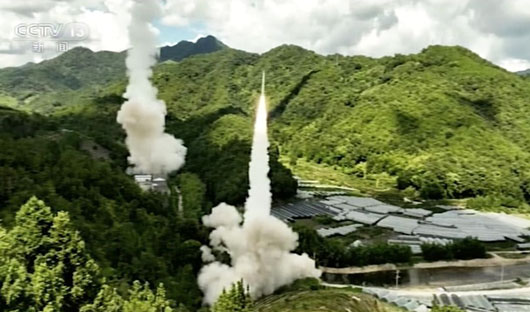FPI / January 11, 2023
Communist China has been able to rapidly build up its nuclear arsenal using American nuclear and missile technology obtained via overly-accommodating U.S. space and nuclear cooperation in the 1990s, according to a review of Chinese technology records and internal U.S. government documents.
“The spectacular growth in Chinese nuclear forces as described recently by Adm. (Charles) Richard highlights two things: First, the Chinese ambition to become a world military hegemon, and two, the unfortunate role of the often reckless transfer of nuclear applicable technology from the United States to China that facilitated this extraordinary growth,” said Peter Huessy, the president of GeoStrategic Analysis.

Huessy, who has studied China’s nuclear buildup, said the expansion of China’s nuclear arsenal is alarming and based substantially on American know-how that Beijing obtained legally and illegally over the decades.
Two Chinese coups targeting advanced American technology significantly accelerated the buildup of nuclear forces during the 1990s, according to a summary of government reports by security correspondent Bill Gertz in a Washington Times report.
The first was a large-scale espionage program to steal nuclear warhead secrets. The CIA concluded in a public assessment that China had obtained information on every deployed U.S. warhead, particularly the compact W-88, which can be used on multiple-warhead missiles.
The second coup involved knowledge gleaned from U.S.-Chinese space cooperation during the Clinton administration. It resulted from a policy that loosened national security export controls to permit joint efforts with Beijing in space. Under the policy, U.S.-based Motorola and China’s Great Wall Industry Corp. agreed in 1993 to launch Iridium satellites on Chinese rockets.
Under the deal, China built a “smart dispenser” to Motorola’s specifications that allowed two satellites to be launched on a single rocket. Motorola denied that it improperly helped the Chinese build the dispenser.
A 1996 report by the National Air and Space Intelligence Center found that the smart dispenser could be used as a post-boost vehicle for China’s DF-5 ICBM.
The report concluded that the smart dispenser, with minimal modifications, “could be used to deploy multiple reentry vehicles” for ICBMs. By 2015, the Pentagon’s annual report revealed that the once single-warhead DF-5 included a modified version with multiple warheads.
As it accumulates wealth and technological expertise, China is moving away from single-warhead missiles, the Pentagon says. The latest annual report says the People’s Liberation Army will place multiple warheads on its 20 DF-5s and will add at least three warheads to the DF-31AG and DF-41 land-based missiles and the new JL-3 submarine-launched missile.
In September, a study by the private intelligence firm Strider revealed that China’s targeting of nuclear laboratories for secrets began in the 1980s and was later modified to recruit nuclear scientists more efficiently. From 1987 to 2021, at least 162 scientists who had worked at Los Alamos traveled to China to assist with sensitive projects. Fifteen of them were formerly on the staff at the lab.
Full Text . . . . Current Edition . . . . Subscription Information
Free Press International
